Common Name(s): Cocobolo, Cocobola
Scientific Name: Dalbergia retusa
Distribution: Central America
Tree Size: 45-60 ft (14-18 m) tall, 1.5-2 ft (50-60 cm) trunk diameter
Average Dried Weight: 67 lbs/ft3 (1,070 kg/m3)
Specific Gravity (Basic, 12% MC): .89, 1.07
Janka Hardness: 3,180 lbf (14,140 N)*
*Estimated hardness based on specific gravity
Rupture Strength: No data available: most likely in excess of 18,970 lbf/in2 (130,830 kPa), the values for Brazilian Rosewood (Dalbergia nigra)Elastic Strength: No data available: most likely in excess of 1,880,000 lbf/in2 (12,970 MPa), the values for Brazilian Rosewood (Dalbergia nigra)
Crushing Strength: No data available: most likely in excess of 9,600 lbf/in2 (66.2 MPa), the values for Brazilian Rosewood (Dalbergia nigra)
Shrinkage: Radial: 2.7%, Tangential: 4.3%, Volumetric: 7.0%, T/R Ratio: 1.6
Color/Appearance: Cocobolo can be seen in a kaleidoscope of different colors, ranging from yellow, orange, red, and shades of brown with streaks of black or purple. Sapwood is typically a very pale yellow. Colors are lighter when freshly sanded/cut, and darken with age; for more information, see the article on preventing color changes in exotic woods.
Grain/Texture: Has small to medium sized pores and a fine texture. The grain can sometimes be interlocked.
Endgrain: Diffuse-porous; medium pores in no specific arrangement; solitary and radial multiples of 2-3; various mineral deposits occasionally present; growth rings distinct due to marginal parenchyma; rays not visible without lens; apotracheal parenchyma diffuse-in-aggregates, banded, paratracheal parenchyma scanty, and vasicentric.
Rot Resistance: Like most rosewoods, Cocobolo has natural oils that give it excellent resistance to decay.
Workability: Due to the high oil content found in this wood, it can occasionally cause problems with gluing. Also, the wood’s color can bleed into surrounding wood when applying a finish, so care must be taken on the initial seal coats not to smear the wood’s color/oils into surrounding areas. Tearout can occur during planing if interlocked grain is present; the wood also has a moderate blunting effect on cutting edges/tools due to its high density. Cocobolo has excellent turning properties.
Odor: Cocobolo has a distinct spice-like scent when being worked, which some find unpleasant: though it has been used in at least one women’s perfume.
Allergies/Toxicity: As with nearly all rosewoods in the Dalbergia genus, Cocobolo contains sensitizers which can irritate the skin, and cause allergic reactions in some people. See the articles Wood Allergies and Toxicity and Wood Dust Safety for more information.
Pricing/Availability: Cocobolo is in limited supply, (proposals have been made—as of yet unsuccessfully—to add Cocobolo as an endangered species in the CITES Appendix II), and is also in relatively high demand, (for ornamental purposes), and is likely to be quite expensive. Prices should compare similarly to other rosewoods in the Dalbergia genus.
Common Uses: Fine furniture, musical instruments, turnings, and other small specialty objects.
Comments: One of today’s most prized lumbers for its outstanding color and figure; yet also one of the most notorious for being difficult to glue, and it’s tendency to cause allergic reactions in woodworkers.Also, there are a few misleading reports of Cocobolo’s Janka hardness being only about 1,100 lbf, and it’s modulus of elasticity at only about 1,100,000 lbf/in2: which is almost certainly either a typo or a different wood than what is commonly called Cocobolo (Dalbergia retusa). Reports indicate that Cocobolo is stronger and denser than Brazilian Rosewood, and that is the basis for the strength values (bending strength and modulus of elasticity) that are quoted at the top of this page.Specific gravity is used to predict the hardness of wood with a fair degree of accuracy, and given its incredibly high density, (it sinks in water: see video below), Cocobolo’s hardness (and other strength properties) is most likely several times higher than the 1,100 lbf which is sometimes reported.
- African Blackwood (Dalbergia melanoxylon)
- Amazon Rosewood (Dalbergia spruceana)
- Bois de Rose (Dalbergia maritima)
- Brazilian Rosewood (Dalbergia nigra)
- Burmese Rosewood (Dalbergia oliveri)
- East Indian Rosewood (Dalbergia latifolia)
- Honduran Rosewood (Dalbergia stevensonii)
- Kingwood (Dalbergia cearensis)
- Madagascar Rosewood (Dalbergia baronii)
- Sissoo (Dalbergia sissoo)
- Tulipwood (Dalbergia decipularis)
- Yucatan Rosewood (Dalbergia yucatensis)
Scans/Pictures: Below
you can see a small representation of the wide array of colors that can
be seen in Cocobolo. Also, due to it’s high density (over 1000 kg/m3) you can also view a video of Cocobolo showing how it sinks in water. A special thanks to Steve Earis for providing the turned photo of this wood species.
http://www.elmundoforestal.com/elcorazon/cocobolo/cocobolo.html
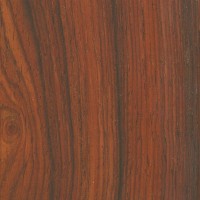
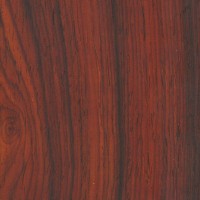
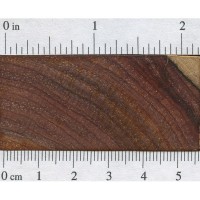
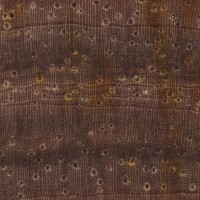
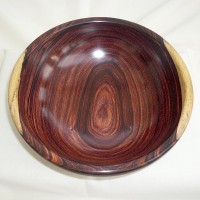
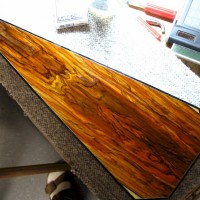
No comments:
Post a Comment